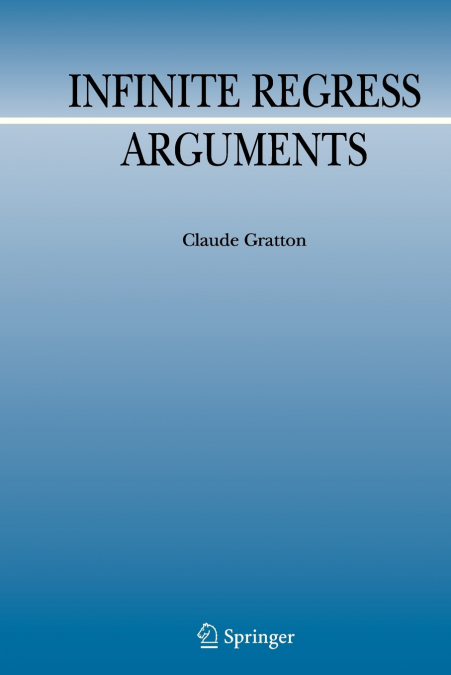
Claude Gratton
Introduction.- Chapter 1 What is an infinite regress argument? 1.1 The general structure of infinite regress arguments. 1.2 Boundaries of an infinite regress argument. 1.2.1 Boundaries when an infinite regress is vicious. 1.2.2 Boundaries when an infinite regress is benign. 1.3 A hypothesis H about the nature of infinite regresses. 1.4 Testing hypothesis H. 1.5 Testing hypothesis H with nonconcatenating regresses. 1.6 Other features of infinite regresses. 1.7 The necessary quantity of terms and relations. 1.8 The relation of terms and objects of infinite regresses. 1.9 Applications of hypothesis H to various example. 1.9.1 Plato’s couch. 1.9.2 Teachers taught by teachers. 1.9.3 Gods giving meaning to Gods. 1.9.4 Maps of maps. 1.9.5 Lewis Carroll’s ’What the Tortoise said to Achilles’. 1.10 Logical functions of infinite regresses. 1.10.1 Benign regresses. 1.10.2 Superfluous regresses. 1.11 Cogency and benign regresses. Chapter 2 Formal and nonformal logic of infinite concatenating regresses. 2.1 Recurring terms, loops, and regress formulas. 2.2 Applications. 2.3 Recurring terms, loops, and infinite concatenating regresses. 2.4 Relations and loops. 2.5 Blocking all possible loops. 2.6 Are irreflexivity, or asymmetry or transitivity necessary to block loops? 2.7 Concatenating relations in regress formulas. 2.8 Directions of infinite concatenating regresses. 2.9 Non-formal considerations in regress formulas. 2.9.1 Relations and their implications. 2.9.2 Stated properties of terms. 2.9.3 Unstated properties of terms. 2.10 Summary. 2.11 Evaluative questions. Chapter 3 Viciousness. 3.1 Are there inherently vicious regresses? 3.2 Clark on viciousness. 3.3 Johnstone and viciousness. 3.4 Uncompletability and viciousness. 3.5 Occam’s Razor: ontological extravagance. 3.6 Blocking some vicious regresses. 3.6.1 Hume. 3.6.2 Miller. 3.6.3 Laurence and Margolis. 3.6.4 The general form of the argument for blocking regresses.Chapter 4 Circular definitions and circular explanations. 4.1 A formal derivation of infinite regresses from circular definitions. 4.2 Infinitely many infinite regresses. 4.3 Semantic considerations. 4.4 Regresses independent of circularity. 4.5 The viciousness of infinite regresses entailed by circular definitions. The derivation of infinite regresses from circular explanations. Chapter 5 Infinite regresses of recurring questions. 5.1 Recurring questions and the derivation of infinite regresses. 5.2 Recurring questions and vicious regresses. Chapter 6 Infinite regresses of recurring problems and responses. 6.1 Plato’s aviary in the Theatetus. 6.2 McTaggart’s discontinual regress. 6.3 Mackie’s discontinual regress. 6.4 Armstrong’s continual regress. 6.5 A continual regress in a version of Cantor’s diagonal method. 6.6 Lehrer’s non-continual regress. 6.7 Evaluative questions.